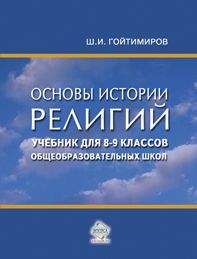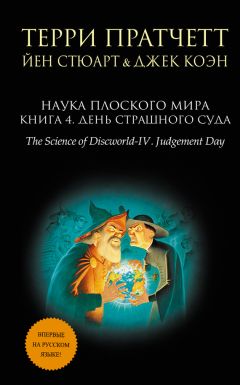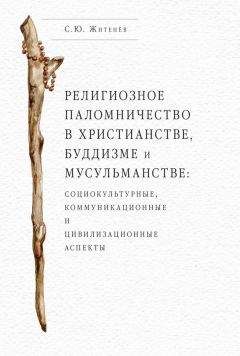Юджин Д'Аквили - Тайна Бога и наука о мозге. Нейробиология веры и религиозного опыта
Murphy, G. L., and J. M. Andrew. 1993. The conceptual basis of antonymy and synonymy in adjectives. Journal of Memory and Language 32:301—319.
Nebes, R. D., and R. W. Sperry. 1971. Hemispheric disconnection syndrome with cerebral birth injury in the dominant arm area. Neuropsychologia 9:249—259.
Neher, A. 1962. A physiological explanation of unusual behavior in ceremonies involving drums. Human Biology 34:151—161.
Newberg, A., A. Alavi, M. Baime, P. D. Mozley, and E. d’Aquili. 1997. The measurement of cerebral blood flow during the complex cognitive task of meditation using HMPAO-SPECT imaging. Journal of Nuclear Medicine 38:95P.
Newberg, A., A. Alavi, M. Baime, and M. Pourdehnad. 2000. Cerebral blood flow during meditation: Comparison of different cognitive tasks. European Journal of Nuclear Medicine.
Newberg, A. B., and E. G. d’Aquili. 1994. The near-death experience as archetype: A model for “prepared” neurocognitive processes. Anthropology of Consciousness 5:1–15.
2000. The creative brain/the creative mind. Zygon 35:53—68.
Nicholson, R. A. 1963. The Mystics of Islam. London: Routledge and Kegan Paul.
Noyes, R. 1980. Attitude change following near-death experiences. Psychiatry 43:234—242.
Oman, D., and D. Reed. 1998. Religion and mortality among the community-dwelling elderly. American Journal of Public Health 88:1469–75.
Pardo, J. V., P. T. Fox, and M. E. Raichle. 1991. Localization of a human system for sustained attention by positron emission tomography. Nature 349:61—64.
Penfield, W., and P. Perot. 1963. The brain’s record of auditory and visual experience. Brain 86:595—695.
Peng, C. K., J. E. Mietus, Y. Liu, et al. 1999. Exaggerated heart rate oscillations during two meditation techniques. International Journal of Cardiology 70:101—107.
Persinger, M. A. 1993. Vectorial cerebral hemisphericity as differential sources for the sensed presence, mystical experiences and religious conversions. Perceptual and Motor Skills 76:915—930.
1997. I would kill in God’s name: Role of sex, weekly church attendance, report of a religious experience, and limbic lability. Perceptual and Motor Skills 85:128—130.
Pesenti, M., M. Thioux, X. Seron, and A. DeVolder. 2000. Neuroanatomical substrates of arabic number processing, numerical comparison, and simple addition: A PET study. Journal of Cognitive Neuroscience 12:461—479.
Pinker, S. 1999. How the Mind Works. New York: Norton.
Porges, S. W., J. A. Doussard-Roosevelt, and A. K. Maiti. 1994. Vagal tone and the physiological regulation of emotion. Monographs of the Society for Research in Child Development 59:167—186.
Posner, M. I., and S. E. Petersen. 1990. The attention system of the human brain. Annual Review of Neuroscience 13:25—42.
Posner, M. I., and M. E. Raichle. 1994. Images of Mind. New York: Scientific American Library.
Preuss, T. M. 1993. The role of the neurosciences in primate evolutionary biology: Historical commentary and prospectus. In Primates and Their Relatives in Phylogenetic Perspective, ed. MacPhee. New York: Plenum Press.
2000. What’s human about the human brain? In The New Cognitive Neurosciences, ed. Gazzaniga. Cambridge Mass.: MIT Press.
Pribram, K. H. 1981. Emotions. In Handbook of Clinical Neuropsychology, eds. Filskov and Boll. New York: Wiley.
Pribram, K. H., and A. R. Luria, ed. 1973. Psychophysiology of the Frontal Lobes. New York: Academic Press.
Pribram, K. H., and D. McGuinness. 1975. Arousal, activation, and effort in the control of attention. Psychological Review 82:116—149.
Raine, A., M. S. Buchsbaum, J. Stanely, et al. 1994. Selective reductions in prefrontal glucose metabolism in murderers. Biological Psychiatry 29:14—25.
Ramachandran, V. S., W. S. Hirstein, K. C. Armel, E. Tecoma, and V. Iragui. 1997. The neural basis of religious experience. Статья представлена в сборнике материалов Annual Conference of the Society of Neuroscience. Abstract #519.1. Vol. 23, Society of Neuroscience.
Reagan, M., ed. 1999. The Hand of God. Kansas City: Andrews McMeel Publishing.
Rightmire, G. P. 1984. Homo sapiens in Sub-Saharan Africa. In The Origins of Modern Humans, eds. Smith and Spencer. New York: Alan R. Liss.
1990. The Evolution of Homo erectus. New York: Cambridge University Press.
Ring, K. 1980. Life at Death: A Scientific Investigation of the Near-Death Experience. New York: Quill Publishers.
Rothenbuhler, E. W. 1998. Ritual Communication: From Everyday Conversation to Mediated Ceremony. Thousand Oaks, Calif.: Sage Publications.
Ryding, E., B. Bradvik, and D. H. Ingvar. 1996. Silent speech activates prefrontal cortical regions asymmetrically, as well as speech-related areas in the dominant hemisphere. Brain and Language 52:435—451.
Sagan, C. 1986. Contact. New York: Pocket Books.
Saver, J. L., and J. Rabin. 1997. The neural substrates of religious experience. Journal of Neuropsychiatry and Clinical Neurosciences 9:498—510.
Savitzky, A. 1999. Cognition, emotion and the brain: A different view. Medical Hypotheses 52:357—362.
Schiavetto, A., F. Cortese, and C. Alain. 1999. Global and local processing of musical sequences: An event-related brain potential study. Neuroreport 10:2467—2472.
Schr dinger, E. 1964. My View of the World. London: Cambridge University Press.
1969. What Is Life? And Mind and Matter. London: Cambridge University Press.
Secknus, M. A., and T. H. Marwick. 1997. Evolution of dob-utamine echocardiography protocols and indications: Safety and side effects in 3,011 studies over 5 years. Journal of the American College of Cardiology 29:1234—1240.
Segal, R. A., ed. 1998. The Myth and Ritual Theory. Malden, Mass.: Blackwell Publishers.
Selnes, O. A. 1974. The corpus callosum: Some anatomical and functional considerations with special reference to language. Brain and Language 1:111—139.
Shermer, M. 2000. How We Believe: The Search for God in an Age of Science. New York: W. H. Freeman & Company.
Shurley, J. 1960. Profound experimental sensory isolation. American Journal of Psychiatry 117:539—545.
Singer, R., and J. Wymer, eds. 1982. The Middle Stone Age at Klasies River Mouth in South Africa. Chicago: University of Chicago Press.
Smirnov, Y. A. 1989. On the evidence of Neanderthal burial. Current Anthropology 30:324.
Smith, B. D., R. Kline, K. Lindgren, M. Ferro, D. A. Smith, and A. Nespor. 1995. The lateralizing processing of affect in emotionally labile extroverts and introverts: Central and autonomic effects. Biological Psychology 39:143—157.
Smith, F. H., and F. Spencer, eds. 1984. The Origins of Modern Humans: A World Survey of the Fossil Evidence. New York: Alan R. Liss.
Smith, W. J. 1979. Ritual and the ethology of communicating. In The Spectrum of Ritual, eds. d’Aquili, Laughlin, and Mc-Manus. New York: Columbia University Press.
Spelke, E. S., K. Breinlinger, J. Macomber, and K. Jacobson. 1992. Origins of knowledge. Psychological Review 99:605—632.
Sperry, R. 1966. Brain bisection and the neurology of consciousness. In Brain and Conscious Experience, ed. Eccles. New York: Springer Verlag.
Sperry, R. W., M. S. Gazzaniga, and J. E. Bogen. 1969. Inter-hemispheric relationships: The neocortical commissures; syndromes of hemisphere disconnection. In Handbook of Clinical Neurology, eds. Vinken and Bruyn. Amsterdam: North Holland Publishing Co.
Sudsuang, R., V. Chentanez, and K. Veluvan. 1991. Effect of Buddhist meditation on serum cortisol and total protein levels, blood pressure, pulse rate, lung volume and reaction time. Physiology and Behavior 50, 543—548.
Suedfeld, P. 1964. Conceptual structure and subjective stress in sensory deprivation. Perceptual and Motor Skills 19:896—898.
Swisher, L., and I. Hirsch. 1971. Brain damage and the ordering of two temporally successive stimuli. Neuropsychologia 10:137—152.
Teasdale, W. 1999. The Mystic Heart: Discovering a Universal Spirituality in the World’s Religions. Novato, CA: New World Library.
Telles, S., R. Nagarathna, and H. R. Nagendra. 1995. Autonomic chances during “OM” meditation. Indian Journal of Physiology and Pharmacology 39:418—420.
1998. Autonomic chances while mentally repeating two syllables – one meaningful and the other neutral. Indian Journal of Physiology and Pharmacology 42:57—63.
Turner, V. 1969. The Ritual Process: Structure and Anti-Structure. Ithaca, N.Y.: Cornell University Press.
Tuttle, R., ed. 1972. The Functional and Evolutionary Biology of Primates. Chicago: Aldine.
Underhill, E. 1990. Mysticism. New York: Doubleday.
1999. The Essentials of Mysticism. Boston: Oneworld Publications.
Vazquez, M. I., and J. Buceta. 1993. Relaxation therapy in the treatment of bronchial asthma: Effects on basal spirometric values. Psychotherapy and Psychosomatics 60:102—112.
Vercelletto, M., M. Ronin, M. Huvet, C. Magne, and J. R. Feve. 1999. Frontal lobe dementia preceding amyotrophic lateral sclerosis: A neuropsychological and SPECT study of five clinical cases. European Journal of Neurology 6:295—299.
Venkatesananda, S., tran. 1993. Vasistha’s Yoga. Albany, N.Y.: State University of New York Press.
Vernet-Maury, E., O. Alaoui-Ismaili, A. Dittmar, G. Dellhomme, and J. Chanel. 1999. Basic emotions induced by odorants: A new approach based on autonomic pattern results. Journal of the Autonomic Nervous System 75:176—183.
Vinken, P. J., and C. W. Bruyn, eds. 1969. Handbook of Clinical Neurology. Vol. 4. Amsterdam: North Holland Publishing Co.
Walter, V. J., and W. G. Walter. 1949. The central effects of rhythmic sensory stimulation. Electroencephalography and Clinical Neurophysiology 1:57—85.
Weingarten, S. M., D. G. Charlow, and E. Holmgren. 1977. The relationship of hallucinations to the depth of structures of the temporal lobe. Acta Neurochirurgica 24:199—216.
Weiskrantz, L. 1986. Blindsight: A Case Study and Implications. Oxford: Oxford University Press.
1997. Consciousness Lost and Found: A Neuropsychological Exploration. New York: Oxford University Press.
Wolford, G., M. B. Miller, and M. Gazzaniga. 2000. The left hemisphere’s role in hypothesis formation. Journal of Neuroscience 20:RC64.
Worthington, E. L., T. A. Kurusu, M. E. McCullough, and S. J. Sandage. 1996. Empirical research on religion and psychotherapeutic processes and outcomes: A ten-year review and research prospectus. Psychological Bulletin 119:448—487.
Zuckerman, M., and N. Cohen. 1964. Sources of reports of visual and auditory sensations in perceptual-isolation experiments. Psychological Bulletin 62:1034—1056.
Zukav, G. 1979. The Dancing Wu Li Masters. New York: Quill.
Примечания
1
Поскольку суждение о том моменте, когда медитация достигает вершины, крайне субъективно, его очень трудно определить и еще труднее измерить. Тем не менее такое «пиковое» состояние крайне интересно, поскольку оно несет в себе самый глубокий духовный смысл и сильнее всего влияет на человека. Пиковое переживание можно выявить с помощью нескольких различных инструментов, которые позволяют одновременно следить за изменением разных параметров. Легче всего идентифицировать подобные моменты, следя за такими показателями, как ток крови в мозге, электрическая активность мозга и некоторые соматические реакции, в частности артериальное давление и частота сердечных сокращений. Начиная наши исследования, мы старались ориентироваться на субъективные ощущения человека, оценивающего свои переживания. Вот почему погруженные в медитацию испытуемые держали рядом с собой веревочку, которая позволяла им, не нарушая процесса медитации, подать нам сигнал в тот момент, когда они достигали самого глубокого состояния. Поскольку мы изучали самых опытных практиков медитации, бечевка им почти или совсем не мешала. Чтобы более детально изучить эти состояния, понадобятся и другие исследования. Пока же достаточно сказать, что мы можем исследовать пиковые состояния или строить гипотезы о них на основе изучения «менее глубоких» состояний, несмотря на то, что нам сложно понять, когда и каким образом возникают эти пиковые переживания. Стоит назвать имена и двух других наиболее важных участников наших исследований: это доктор Абасс Алави, глава отделения ядерной медицины в госпитале Университета Пенсильвании, который оказывал мне огромную поддержку, хотя иногда я занимался довольно странными вещами, и связанный с тем же Университетом Пенсильвании доктор Майкл Бэйм, специалист по внутренним болезням, практикующий тибетский буддизм.




